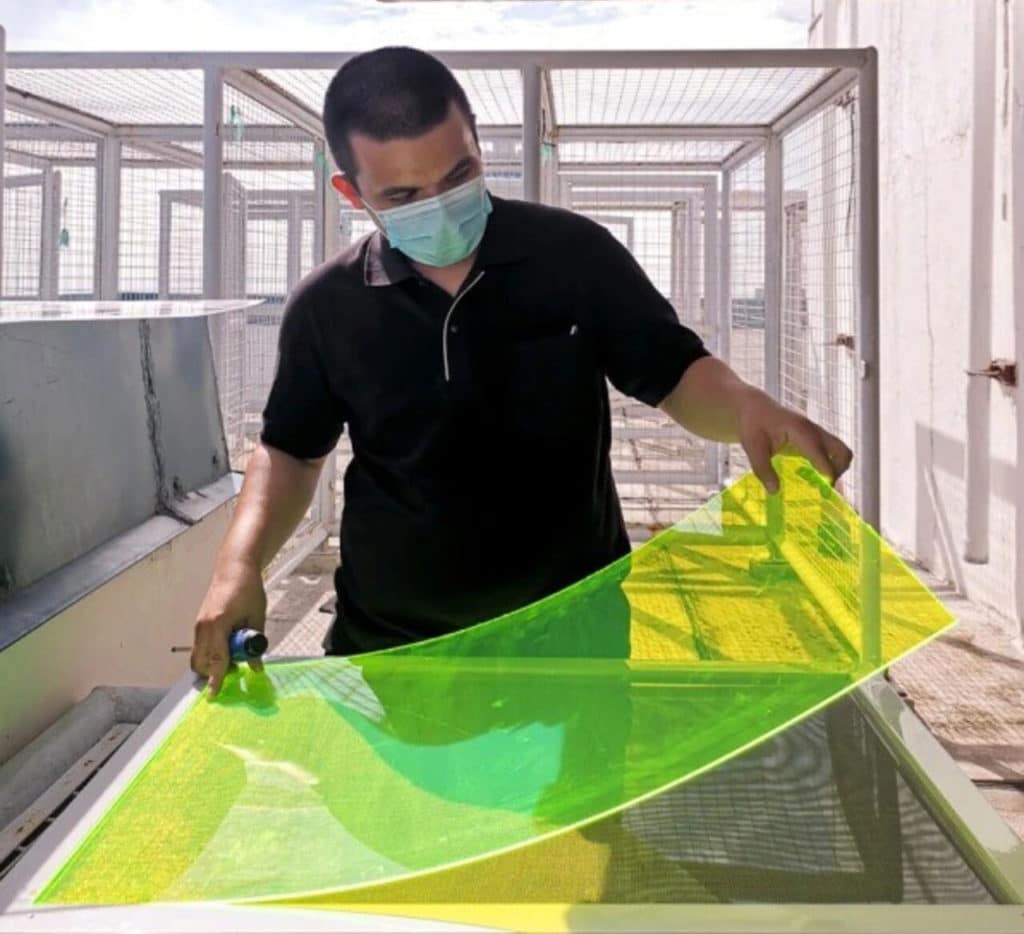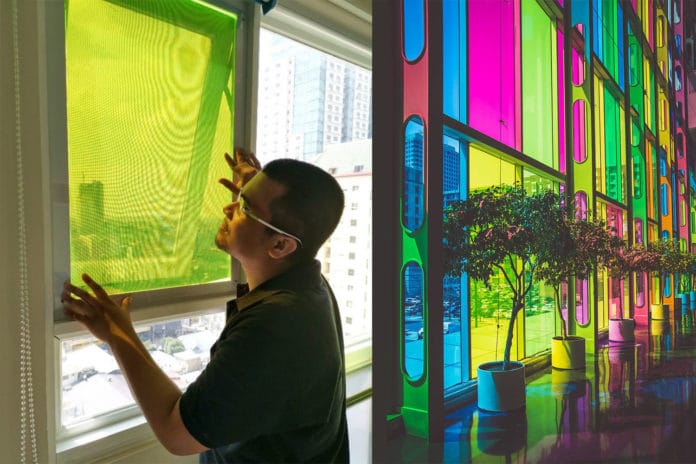The British James Dyson Foundation presented the first Sustainability Award to Carvey Ehren Maigue, an electrical engineering student in the Philippines. He was awarded for creating new material from recycled crop waste that has the ability to transform ultraviolet (UV) rays from the sun into electrical energy. The technology could soon be turning the windows and walls of buildings into a rich new source of electricity.
The invention of the Filipino university student is called AuREUS (Aurora Renewable Energy and UV Sequestration). Both AuREUS devices (Borealis Solar Window and Astralis Solar Wall) use the same technology used in the beautiful Northern and Southern lights. High energy particles are absorbed by luminescent particles that re-emit them as visible light. A similar type of luminescent particles (derivable from certain fruits and vegetables) were suspended in a resin substrate and is used as the core technology on both devices.
When hit by UV light, the particles absorb and re-emit visible light along the edges due to internal reflectance. PV cells are placed along the edges to capture the visible light emitted. The captured visible light is then converted to DC electricity. Regulating circuits will process the voltage output to allow battery charging, storage, or direct utilization of electricity.

What makes AuREUS special is that unlike ordinary solar panels, AuREUS can function even when not directly facing the sun; it can rely on UV scattering through clouds and by UV light bouncing along walls, pavements, other buildings.
Carvey tried to use fruit and vegetable crop waste as a compound for absorbing UV light: after testing nearly 80 different types of local crops, he discovered nine that showed great potential for long-term use. Mixing that with a resin and lining it with a solar film, he created glass-like panels that can produce a surprising amount of electricity. The substrate, when applied to materials, is strong, translucent, and can be molded into different shapes.
Tinted lime green but transparent, the test panel can generate enough wattage per day to charge two phones. Carvey says when scaled up, these panels could enable buildings to produce all their own electricity. He is already studying how to develop its material beyond use on windows and walls, as well as in textiles and applications on cars, boats, and airplanes.
Carvey also received $35,000 as part of the prize. Currently, among the five colors used (Red, Orange, Yellow, Green, and Blue), a stable alternative to the blue dye has not been successfully made yet. Success in this area will bring sustainability to a full circle.
